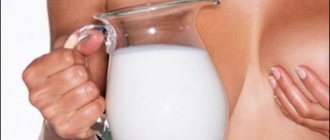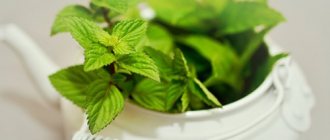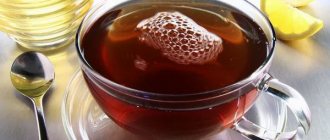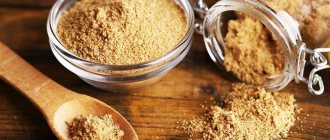Hello Yasmin! The yield of milk that is yellow in color only indicates that it has the composition of colostrum, i.e. it is fatty and high in calories. Your task is to carefully monitor the condition of the breast, feed the baby as often as possible from this breast for a while - do not allow long (more than 4-5 hours) breaks. The increase in temperature was caused by the body's reaction to swelling. The fact that the temperature no longer rises and the breasts do not have lumps is a good symptom. As a preventative measure, you can use Traumeel S ointment - apply a thin layer to the breast after feeding, avoiding halos and nipples. Check the tightness of the underwear - it should not compress the chest. Don't sleep on your stomach anytime soon. Do not hold your breast away from your baby's nose with your finger when feeding.
Feed your baby healthy!
I don’t know which section the question belongs to:
My milk turned yellow, I didn’t feed for about a week (I was undergoing treatment), and I pumped periodically. The last time I noticed that the milk was yellow, just an unpleasant color, it seemed to taste the same as before. why is this happening?
Veronica Myachina it has become more concentrated, most likely, it’s okay
Every mother strives to ensure that her child eats the highest quality products possible. During breastfeeding, this desire often translates into careful monitoring of breast milk parameters such as color and consistency.
The article will tell you about the reasons for the possible color change, in particular when and why it can take on a yellow tint, and whether you should worry about it.
What color is breast milk?
Contrary to popular belief that breast milk should be purely boiling white, in fact, this nutritious liquid can take on a variety of shades.
Its color can normally change not only at different stages of lactation, but also during the day and even during feeding, acquiring the following shades:
It can also have different consistencies and degrees of transparency.
A yellow tint is inherent in colostrum and involutional milk (during the period of curtailment of lactation). In addition, it can turn yellow if you eat a lot of brightly colored vegetables and fruits of the corresponding shade (such as pumpkin, carrots, sweet potatoes) or foods with dyes.
In addition to the shades already mentioned, it may have a green, orange or blue tint, which is a consequence of consuming certain foods (spinach, sorrel, seaweed, beets, blueberries), drinks (lemonade, juices, soda) or medications containing dye.
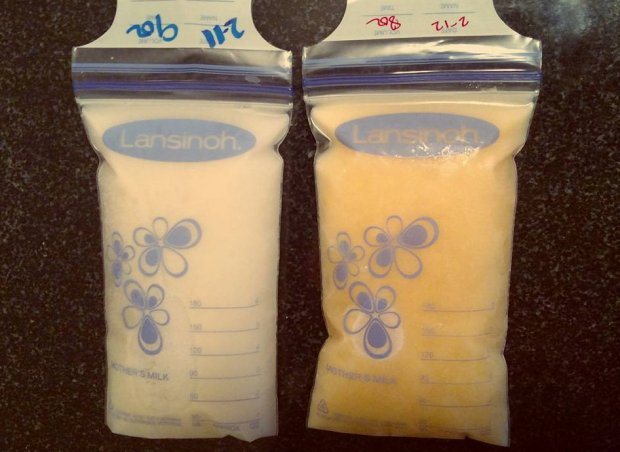
can you drink your breast milk
How much should you eat?
Perhaps one of the most persistent misconceptions is that a breastfeeding woman is obliged to eat for two.
Otherwise, the baby will not have enough milk. Studies on poorly nourished breastfeeding mothers found that increasing their caloric intake did not affect the amount of milk they produced. The extra calories went into the mother's fat reserves, and not into her milk. And this is understandable, because it has long been proven that the amount of milk depends to a large extent on the quantity and quality of breastfeeding.
In this regard, modern recommendations say: it is enough for a nursing mother to add one meal. This could be a second, light dinner or breakfast, during which she will eat an additional 300-500 kcal. This is approximately how many calories an infant consumes per day.
About the need for a diet
On the one hand, a nursing mother is forced to eat to her fullest, on the other hand, they are told from all sides that it is impossible to eat specific foods, excluding a good half of the food that is healthy and necessary for a woman.
This applies to everything that can increase gas formation (this is not only cabbage and legumes, but also bread, grapes), as well as potential allergens (citrus fruits, strawberries, honey, nuts, eggs, even milk). It also includes pork and fatty fish. Various sources can add many more restrictions to this list. Fact!
In its pure, unprocessed form, only artificial food additives (dyes, preservatives, stabilizers, etc.) and some medications penetrate into milk.
So what can a nursing mother eat? In fact, almost everything! To understand this, it is enough to understand the process of milk synthesis.
Food eaten by a woman enters the gastrointestinal tract, is digested, and the substances it contains are absorbed by the intestinal walls and enter the blood. Next, the mammary gland produces milk from the mother's blood and lymph. That is, all fermentation processes from cabbage remain in the intestines, and allergens are safely processed in it.
It’s another matter if the mother’s body reacts too violently to cabbage or milk, or if the mother is sensitive to citrus fruits. Increased gas production by the mother changes the composition of her blood, which means it could potentially affect breast milk. But even in this case, the child will not necessarily react to the vegetable stew eaten by the mother for lunch. It’s the same with allergies: with an allergic mother, the child is more likely to be sensitive to the same products, but not always.
The most important thing is that, while in the womb, the child has already become familiar with many foods and even allergens. And if substances from such products continue to be supplied in small doses through mother’s milk, the baby’s body will gradually learn to cope with them. In this case, when complementary foods are introduced, the child is less likely to have an allergy or other inappropriate reaction.
Milk and cottage cheese
Another horror story: if she doesn’t drink milk, she won’t have any; If he doesn’t eat cottage cheese, the child will have weak bones, his teeth won’t grow, and his mother’s teeth will fall out.
But which wild animal drinks milk to improve lactation? And no one feeds them cottage cheese.
Milk is healthy in itself, as it contains many useful substances. And you can and should drink it, without fanaticism, but only if the mother wants it, and if her body digests milk well. The same goes for cottage cheese. The product is healthy, but forcing yourself to eat it, even for the sake of your child, is not worth it. Food eaten without desire and appetite will not be accepted by the body, and therefore will not be beneficial. That's how we are made.
Both milk and cottage cheese are successfully replaced with other products: cheese, kefir or yogurt, salmon fish, legumes, cabbage, fresh herbs, carrot juice, raisins and dried figs.
Onions, garlic, spices and other flavors
Another well-known myth: a child may refuse to breastfeed if the mother ate onions or garlic.
Important! The cause of problems that arise during breastfeeding, as a rule, is not the nature of the mother’s diet, but other factors, such as the nervous environment in the home, difficult adaptation, immaturity of the gastrointestinal tract, immune system and other organs and systems of the baby.
Scientists have tested this statement. It turned out that no strong-smelling foods or seasonings can curb a baby’s appetite. Moreover, after the mother eats garlic, the baby sucks with greater desire and applies more often.
Fatty foods
The old school argued that the fat content of milk depends on the caloric intake of the mother and how much fatty foods she eats.
In fact, it turned out that the fat content of breast milk depends on many reasons, among which the quality of nutrition is one of the least significant. First of all, the mother’s body responds to the baby’s needs. The state of the environment matters (in the summer, in the heat, fat is harder to digest) and the time of day (at night the child must sleep, and the calorie content of milk increases due to the fat content). Also during feeding, milk from one breast has different fat content. The fattest milk is the one that the baby sucks out at the end.
Recommendations regarding the fat content of foods are general: you should not load your body with excess fat, but low-fat foods are not healthy either.
How much to drink?
They say that you should drink up to 2 liters of fluid per day. Moreover, you should drink a glass of some drink before each feeding. Otherwise there will be little milk.
Considering modern recommendations about feeding on demand, it is scary to imagine that, following old recommendations, a woman will have to drink up to 20 glasses of water in the first month. Add the liquid you get during each meal.
On the other hand, it was previously advised to limit fluid intake in the first days or even in the first month after the birth of the baby, fearing stagnation due to increased fluid levels.
Modern medicine knows that if there is excess fluid in the body, it is difficult for it to “give” milk, that is, stagnation can easily occur. But a nursing mother, like any person, should not feel thirsty, because this can negatively affect well-being and even health. So listen to your body and drink exactly as much as you want.
Coffee
The previous recommendation to give up coffee and other caffeine-containing drinks and medications has now also been adjusted. It has become known that caffeine is also present in significant doses in tea, especially green tea, which mothers are even strongly advised to drink.
It has been noticed that some children have sleep disturbances due to caffeine and become moody. However, if during pregnancy the mother allowed herself a cup of coffee in the morning, most likely the baby is already accustomed to this substance. And after his birth, you can carefully try weak coffee. There should be no reaction from the baby.
In addition, some women physically cannot do without coffee in the morning. How will a mother take care of her baby if she cannot get out of bed?
Vitamins
To ensure that milk contains enough nutrients, a woman needs to take special multivitamins. That's what they thought before.
The female body is designed in such a way that during the feeding of the child it gives up all its reserves, both fat and reserves of vitamins and minerals. Therefore, it does not matter for the quality of breast milk whether a woman takes vitamin supplements. In this case, it is more important for her to eat rationally, since if there is a lack of vitamins in the diet, the mother’s body will suffer first. And there will always be resources for the development of the baby’s body.
Taking vitamins with a proper diet and proper daily routine is not at all necessary. But if you decide to play it safe, then take frequent breaks when taking multivitamin medications. For example, after 2 weeks of taking it, put it off for the next 2 weeks. This way you will be sure that the ratio of vitamins in the body will be at the correct level.
Fact: The concentration of nutrients, which are always very abundant in breast milk, increases even more after 1.5-2 years. Women's milk is never “empty” and even less “harmful”, as some doctors still claim.
The process of feeding a child is so natural that it would be strange if its success directly depended on the mother’s nutrition.
A few words about the dependence of the quality and quantity of milk on the mother’s nutrition
As we found out earlier, the level of fat, vitamins and minerals in breast milk does not depend on the diet of the nursing mother. The amount of protein, as has been known for a long time, also has a certain meaning under any conditions. Nature intended that during pregnancy a woman accumulates everything she needs to feed her baby. Fat deposits and reserves of nutrients accumulated over 9 months are gradually consumed over the next 6-9 months. It is through reserves that the uninterrupted production of always healthy and satisfying milk is ensured, regardless of the number of meals or the quality of the products.
The amount of milk depends only on hormones, which tell the body how much milk needs to be produced for the next feeding. These hormones are released when the baby suckles at the breast. Therefore, the most effective way to increase lactation is to put the baby to the breast as often as possible and not finish feeding until the baby releases the nipple.
Approach the issue of nutrition sensibly, eat fully, “correctly” - the same way you ate during pregnancy. No sacrifices are required from you.
Source: https://yarmalysh.ru/stati/pitanie-detej/grudnoe-vskarmlivanie/zabluzhdenija-o-pitanii-kormjaschih-mam
What factors influence the color and composition of milk?
The color and composition of this product depend on many factors:
- Lactation stage - colostrum, transition period, mature lactation, breastfeeding involution.
- Maternal nutrition - consumption of foods containing natural or artificial colors.
- View - front, rear.
- Illnesses and medications.
- Bad habits - when smoking, nicotine from cigarettes penetrates into milk, changing its smell and taste, bringing with it a lot of harmful substances. In addition, nicotine negatively affects the production of prolactin, reducing milk volume.
- Emotional state - stress experienced by a nursing mother leads to an increase in the level of the hormone cortisol, which from the woman’s blood enters the mammary glands and reduces the beneficial protective and immune properties of breastfeeding.
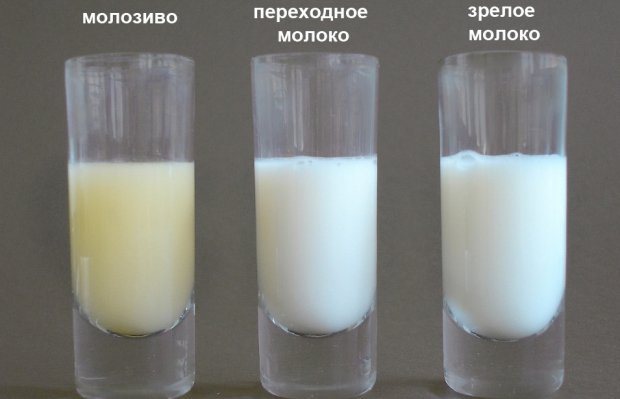
Properties of the miracle drink
To begin with, it is worth mentioning the huge amount of vitamins contained in “white gold”. Fat-soluble A and D, water-soluble from group B. You definitely need to remember about vitamin C. Its percentage is much higher than in cow's vitamin. Vitamin D is necessary for both mother and child. The thing is that when breastfeeding, calcium is “washed out” of a woman’s body. You can eat cottage cheese or sour cream in kilograms, drink vitamins in liters, but if there is no vitamin D, then calcium will pass through your body in transit.
And without it, mom’s hair will begin to fall out, her teeth and nails will crumble, and her bones will soften. The risk of fractures increases even with a minor impact. In an infant, due to a lack of calcium, the fontanel does not heal, rickets occurs, and there are delays in both growth and development. That is why they advise children to give vitamins in drops. But goat milk contains the required amount of ergocalciferol. Thanks to it, calcium, which is present in the secretion of the mammary glands of goats, is also absorbed.
Why is goat's milk less likely to cause allergies than cow's milk? Everything again is explained by the composition. Cow milk contains casein of the alpha group, while goat milk contains casein of the beta group. It is beta casein that is safe for an infant. After all, it is found in mother's milk.
Goat's milk contains large quantities of fats and albumin, which help it to be better absorbed. This allows it to be introduced into the diet of a child up to one year old. Most often, there is no vomiting or diarrhea after its use. But you shouldn’t give it to children so early. Of course, it can be combined with formula milk or with breastfeeding, but this is too specific a product: it contains a huge amount of fat by nature. Even though they are easily broken down and absorbed, the body that has not yet become stronger will be subject to unjustified stress.
Useful: Indications for artificial feeding
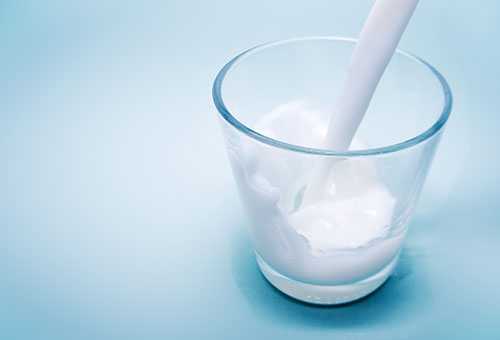
Features of colostrum and mature milk
Colostrum is a secretion of the mammary glands, released in the first few days after childbirth. Colostrum is very nutritious, so newborns who are not yet completely accustomed to the new way of eating can get the necessary substances from just a few drops.
In addition to being high in calories, colostrum contains large amounts of fat and natural antioxidants, including beta-carotene. It is this that colors colostrum yellow and even orange.
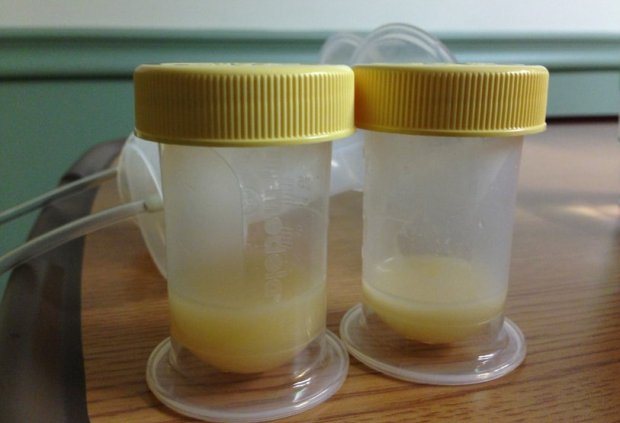
Gradually (over about two weeks) the colostrum becomes mature. Mature lactation is characterized by a dependence on fat content, which will be discussed further.
Beneficial features
Almonds contain vitamins A, B and E. Interestingly, nuts contain more vitamin C than citrus fruits and black currants. Nuts have a beneficial effect on the functioning of internal organs, help the mother quickly recover after childbirth, and promote normal growth and development of the baby.
Almonds perform the following beneficial functions:
- Lowers cholesterol and sugar levels;
- Reduces weight;
- Helps with hypertension, ulcers and diabetes;
- Improves vision, reduces fatigue and treats eye diseases;
- Relieves heartburn;
- Stabilizes heart function;
- Stimulates the activity of brain cells and improves memory;
- Prevents the development of cancer cells;
- Makes breast milk nutritious by being rich in healthy fats;
- Ensures normal material metabolism;
- Calms, relieves stress and irritability;
- Strengthens the immune system and resists the occurrence of colds and viral diseases;
- Improves mood and helps with stress;
- Improves hair and skin condition
Almonds, like other types of nuts, have a positive effect on lactation. It does not increase production or volume, but makes breast milk nutritious and rich. Therefore, doctors recommend eating nuts for problems with lactation. But this must be done in compliance with the recommendations and dosage.
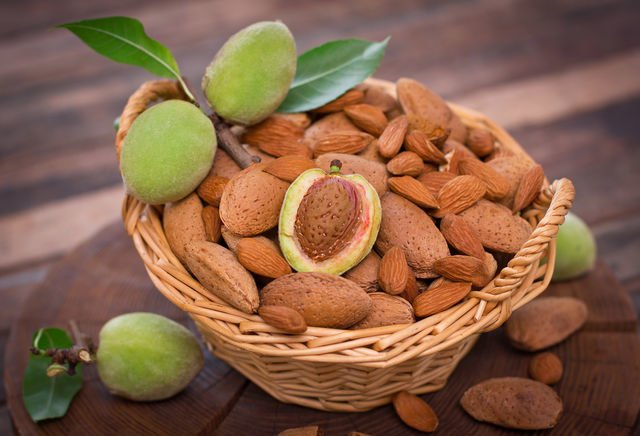
What is the difference between foremilk and hindmilk
Breastfeeding is designed not only to provide the baby with food during the first six months of life (this period is approximate and based on the recommendations of the World Health Organization), changing and adapting to the needs of a rapidly growing organism. It can also satisfy the child's need for fluid.
It is in this regard that mature milk is divided into two groups:
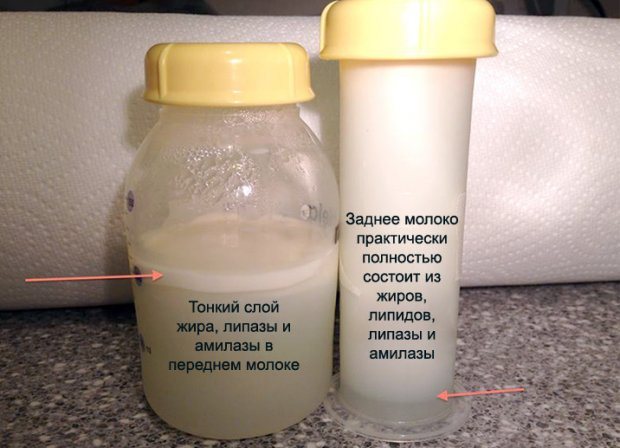
What changes in milk should you be wary of?
Despite the acceptability of any shade, sometimes situations arise that should alert a nursing woman.
These conditions are usually accompanied by pain in the breast area and require immediate contact with a specialist - a gynecologist, who, based on the results of the examination, can refer you to a surgeon and mammologist.
Discharge of pus is a clear sign of mastitis that occurs due to lactostasis and breast injuries. The pus is usually greenish, translucent, and has an unpleasant odor. Mastitis most often also presents with chest pain, swelling and fever. In this case, it is necessary to contact a doctor as soon as possible, who will determine the method of therapy - medication or surgery, and also decide whether breastfeeding is permissible. Before consulting a doctor, stop breastfeeding and pump to maintain lactation. With unilateral mastitis, you can continue feeding with healthy breasts.

Breast milk is a unique product whose color and composition constantly changes to suit the needs of the baby. The article answered why this nutrient liquid can turn yellow, as well as other colors other than white.
During different periods of breastfeeding (BF), when pumping, young mothers often notice how the color of breast milk changes from translucent bluish to rich yellow. Its shade can change even during one feeding.

Unique structure
In Soviet times, the benefits of breast milk were treated with disdain. Its composition was considered insufficiently nutritious. When a bluish tint appeared, feeding was stopped immediately.
GW was replaced by a mixture whose base consisted of cow's or goat's milk.

Mother's milk has many differences from animal milk. It contains more than 500 components.
It may become more liquid, acquire yellow, blue or some other shade. At the same time, enough nutrients remain.

According to WHO, breastfeeding should begin in the first seconds of a baby's life. For up to six months, milk can saturate a small body with everything necessary for proper growth and development.
After 6 months, its nutrients are only 50% sufficient. Therefore, from this age it is recommended to introduce complementary foods. At the same time, it is important to maintain breastfeeding to maintain strong immunity, the absence of allergic reactions and psychological problems.
Experts believe that lactation should be completed no earlier than the child turns 2 years old.
Beneficial properties of goat milk product
Before you decide whether to drink goat milk during lactation, you should look at its vitamin composition:
- Goat milk contains a high percentage of protein, fat and calcium. Compared to cow's milk, goat's product is much more nutritious and fatty in this sense.
- Vitamins A, D, C and group B help improve immunity, and vitamin D helps the body absorb calcium in full.
- Vitamin E stimulates the formation of red blood cells, restores and maintains normal functioning of sexual functions, and prevents cell destruction.
- Vitamin H helps proteins to be fully absorbed, acts as a regulator of acid metabolism, and has a beneficial effect on skin health.
- Vitamin PP helps tissues and organs recover.
Other benefits of goat milk include:
- Goat milk contains a minimal amount of lactose, which not every human body can process.
- The product is an excellent energy drink.
- Normalizes digestion, does not cause diarrhea, bloating, flatulence.
- Has a hypoallergenic composition.
- Milk contains amino acids in quantities greater than those found in meat and fish.
Goat milk product is rich in chlorine, calcium, molybdenum and phosphorus, as well as lecithin, globulin and albumin. And if you regularly consume goat milk, the following changes occur in the body:
- hormonal balance is restored;
- blood clotting is normalized;
- immunity is strengthened;
- prevents the development of oncology and diabetes;
- fluid balance is restored;
- mental activity improves;
- teeth and bones are strengthened;
- promotes the removal of uric acid from the body;
- the face acquires a healthy color;
- the skin becomes elastic;
- muscle tissue is strengthened and toned.

How to increase milk supply while breastfeeding? - read here.
Catalog of articles on breastfeeding
How to use a breast pump correctly? Read here.
As a rule, a nursing mother can drink goat milk if she has problems such as:
- vascular diseases;
- acne;
- problems with the gastrointestinal tract;
- thyroid pathology;
- dry skin and hair;
- colds;
- migraine;
- insomnia;
- vitamin deficiency or hypovitaminosis.
Goat milk can be stored in the refrigerator for about 3 days. But still, in order to get the full vitamin content of this drink, it is better to drink fresh milk.
Factors influencing the composition
The constituents of breast milk change frequently. It depends on the baby's development process.
Primary milk or colostrum is usually yellow in color. It contains a high concentration of protein. At the same time, the amount of lactose and fat in it is very small.
Mature secretion, unlike primary secretion, is enriched with minerals and vitamins. It is higher in calories.
Even during one feeding, the concentration of nutrients, fats, proteins and carbohydrates can change.

Colostrum is the yellowish, slightly transparent liquid that appears immediately after the birth of a baby. This milk is considered primary. Its volume is very small. In some women, it begins to secrete during pregnancy.
Sometimes its color turns orange. Don't be afraid of this. This is due to the high content of beta-carotene, which temporarily replaces vitamin A.
A newborn has a tiny stomach.
Therefore, to provide it with nutrients in the first days of life, only 30 ml of colostrum at one time is enough. Due to the minimum water level, the energy value of colostrum is extremely high. At the same time, the baby’s kidneys are not overloaded during its processing.
Benefits of colostrum:
3-5 days after the birth of the child, colostrum is in a transitional state. It is more liquid in consistency, the color becomes white, and there is less protein in the composition.
Many people note that at first, children often require breastfeeding; they need more food. The mother's body begins to adapt to the baby's needs, increasing the volume of milk.
It is on this basis that experts recommend feeding newborns on demand, and not according to time. Frequent communication with the child increases the production of progesterone, which is responsible for lactation.
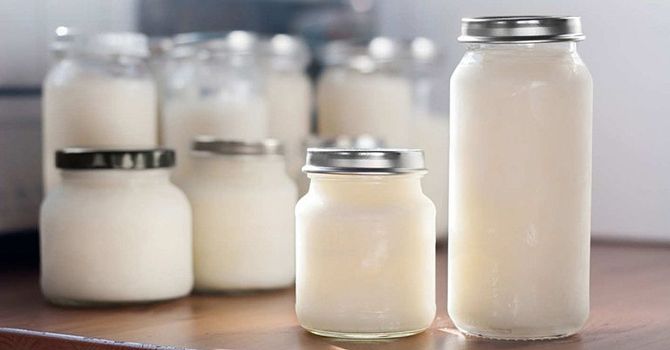
The formation period is approximately 2 weeks and has its own characteristics:
- The concentration of fats and carbohydrates becomes greater, and the protein decreases. At one week of age, the child’s body does not require muscle strengthening. He has other tasks - adaptation to new conditions and the completion of the formation of systems and organs.
- Increased amount of lactose. An increase in its concentration makes milk more tasty and appetizing. It becomes sweet and gives the child energy to move, developing the nervous system and brain. In addition, lactose promotes the formation of intestinal microflora.
- Alpha-lactalbumin. Used in anti-cancer drugs to suppress tumors. It is contained in milk in large quantities to prevent pathological cell proliferation.
The milk matures after the transition period is completed. This happens 14 days after birth. Throughout the entire period of breastfeeding, its volume and composition are adjusted.
This process depends on the baby’s needs and happens on its own.
For example, during a child’s illness, antibodies appear in the milk.
Also, during this period, its color acquires a more saturated white hue.
The composition of mature milk includes:
- Water. When breastfeeding, it is not customary to supplement the baby with food. Milk replaces both drink and food for him. The body's need for fluid increases with age.
- Lactose and carbohydrates. The concentration of these components also becomes higher as the child grows. Some children suffer from lactose intolerance. In this case, you need to consult a doctor to correct your digestion.
- Fats. Their share is increasing significantly. They are necessary for the full functioning of the brain, good weight gain and rapid skin restoration. The mother's nutrition directly affects the level of fats in milk. It becomes more nutritious if you include vegetable oils, meat and fish in the diet. But when eating sweets and fried foods, the child may have digestive problems or an allergic reaction.
- Squirrels. The protein content does not depend on the mother's diet. The concentration of this component is at the same level. Protein is necessary to strengthen the immune system, growth and development of the child. In addition, it improves digestion and allows you to reduce the period of colic on natural feeding, compared to artificial feeding.

The composition of breast milk is balanced and varied. It is enriched with minerals, vitamins, enzymes and fatty acids.
Throughout the entire breastfeeding period, milk is mature. When lactation ends and the number of breastfeedings is reduced to nothing, involution occurs.
This process is accompanied by a change in the external and taste qualities of milk. Yellow color is considered normal during this period. In addition, the consistency becomes thicker. The volume begins to gradually decrease.
With the abrupt end of lactation, an inflammatory process may occur. Lack of pumping and latching on the baby can cause lactostasis, which, in turn, leads to mastitis.
This causes pus to form in the chest. The body's response is to increase body temperature.
Lumps appear in the chest, which can sometimes only be removed surgically.
Rules for drinking goat milk during lactation
- When breastfeeding, you can start drinking goat's milk after 3-4 weeks after the baby is born;
- Try a small sip the first time. It takes up to 48 hours for food allergy symptoms to appear, so wait two days. If your baby develops an allergy, immediately eliminate the drink from the diet. How to help your baby with a negative reaction to food, read the link https://vskormi.ru/problems-with-baby/pischevaya-allerguya-u-grudnichka/;
- If there are no negative consequences, a nursing mother can drink goat milk;
- At first, dilute the milk by half with water, and then gradually reduce the dose of water until completely eliminated;
- The rate of drink consumption is no more than a glass a day up to two to three times a week;
- Choose a quality product with a good shelf life. It is better if it is homemade milk;
- It is advisable to boil the drink before drinking;
- Do not add goat's milk to tea or coffee;
- The shelf life of goat milk at room temperature is up to 48 hours, in the refrigerator - about a week.
Goat milk is used not only for food.
The drink is known for its beneficial cosmetic properties. Baths of the serum for 30 minutes a day will relieve calluses and cracked heels. Masks and lotions using this product will strengthen the hair and smooth the skin. The skin will be refreshed and rejuvenated, and the hair will be shiny and beautiful. Many breastfeeding mothers face the problem of hair loss after childbirth. How to improve the condition of your hair while breastfeeding, read here. Subscribe to our VKontakte group
Lactation and pregnancy
The onset of pregnancy during breastfeeding leads to a reduction in the secretion of the mammary glands and a change in the color of the milk. Outwardly, it becomes very similar to colostrum, that is, it turns yellow.

Often children refuse to breastfeed due to deterioration in taste.
If breastfeeding is maintained during pregnancy, the composition of the milk becomes more suitable for the unborn child.
Foremilk and hindmilk
Depending on how much time has passed since feeding, you may notice a change in thickness and color when pumping.
The foremilk may have a bluish color. It is translucent and liquid.
Hind milk has a thick, opaque consistency and rich color. To receive it, the baby needs to make an effort when sucking and spend a long time on the breast.
The formation of foremilk and hindmilk is natural. The thick consistency is located on the back walls of the chest, and the liquid consistency is located near the nipple.
Thus, at the beginning of feeding, the baby receives water, which replenishes the required level of fluid in the body. And to satisfy his hunger, he continues to suck and gets to the more nutritious part.
If there is no feeling that the breast has become lighter, and the feeding itself lasted several minutes, then the baby drank only foremilk. Only 15-20 minutes after the start of sucking can you get the back part.
Based on this rule, experts recommend feeding from 1 breast at a time. Changing breasts at one feeding will lead to the fact that the baby will not have time to suck the fatty part and will quickly get hungry.
The place of the goat “gift” in the diet of infants
All pediatricians unanimously “shout” to the whole world that until the baby is six months old, it is necessary to breastfeed exclusively. Unfortunately, it may happen that a nursing woman either has insufficient or no lactation at all. What to do? Formulas come to the rescue, but you still want to feed your child natural and healthy food. If you choose between milk from large or small livestock, then give preference to the latter. A child can safely try cow's milk only after 2 years.
If you decide to supplement your baby with goat milk instead of formula, then remember a few rules:
- If you take country goat milk, make sure the goat is healthy. Don’t hesitate to inquire about the animals’ vaccinations and past illnesses. Tests for latent mastitis must be carried out; goat blood and milk must be submitted in a timely manner to a veterinary laboratory for research to exclude dangerous diseases. The animal must also be examined for helminths. Don't risk your child's health. Do you buy it in a store? Check the expiration dates and storage conditions, and try it yourself before use to avoid souring.
- Boil even store-bought goat milk. Do not give it to your baby in its pure form. Be sure to dilute with boiled water. The fact is that a baby should not be given milk with a fat content of more than 2%. But often the recommended ratio between “white gold” and water is 1 to 1. A single volume should not exceed 100 ml - this is an already diluted and ready-to-use portion.
- Introduce gradually. For the first time, give only 20 milliliters for testing. And dilute it like this: 2 parts water and 1 part drink. Take a break for a day to assess the child’s well-being: are there any changes, has a rash appeared, or has the stool changed? If everything is fine, slightly increase the daily volume of dairy product. Do not introduce into the diet too early. It can be given only when the child reaches nine months of age, and to artificial children - a little earlier.
Helpful: How much milk should a newborn eat per day?

Reasons for changing shade
First of all, it is worth remembering that yellow, white or blue is the norm. Such shades may appear during periods of changes in the composition of milk.
Sometimes a woman may notice unusual changes in her milk.
There may be several reasons for this:
- Changes in diet. With a large amount of greens in the diet, the milk may take on a green tint. And when eating beets, carrots and pumpkins - orange or pink. Berries can give a blue or purple color. If your baby is not allergic to these products, colored milk is absolutely safe.
- Dyes. Chemical additives in a mother's food can give the milk an unexpected color. Usually bright sweets and carbonated drinks give this effect. They can cause an allergic reaction and gastrointestinal problems in the child.
- Medicines. After taking certain medications, the milk may turn black. Therefore, you can take medications while breastfeeding only after consulting a specialist.
How to increase lactation
To increase lactation, you need to follow several important rules:
- Stabilize your diet. Is it possible to have milk in this case? When breastfeeding, goat milk is allowed, but it has virtually no effect on the lactation process. Just make sure that your diet contains a sufficient amount of vegetables, fish, nuts, honey, and royal jelly. Avoid salty, smoked, excessively fatty foods, foods containing emulsifiers and preservatives.
- Green tea, plain water, freshly squeezed juices help well, especially nut milk, which is possible for nursing mothers, because there is nothing in it that will cause an allergy in the baby, and nuts are rich in calcium, potassium, magnesium; They improve memory and improve mood.
If you want to take any pharmaceutical drugs, consult a specialist. Sometimes the tips described above are enough for good lactation.
Warning signs
Sometimes a change in consistency or color indicates a health problem. If problems are suspected, it is recommended to express milk, evaluate its external characteristics and consult a doctor.
What else can affect the color of milk:
- Pus. It is released during stagnation, mastitis and inflammatory processes. Accompanied by fever and chest pain. If symptoms appear, you should stop feeding and consult a doctor. For prevention, it is recommended to alternately apply the child to both glands and perform pumping if stagnation is suspected.
- Blood. Blood impurities appear during severe milk flows due to a sharp increase in milk volume and damage to blood vessels. This occurs after a bath, taking a large volume of warm liquid or disrupting the feeding regime. There is nothing scary about this, despite the fact that it looks scary, you do not need to stop feeding.
- Cracked nipples. The milk may turn pink if the nipples have cracks that bleed. This situation does not harm the baby.
